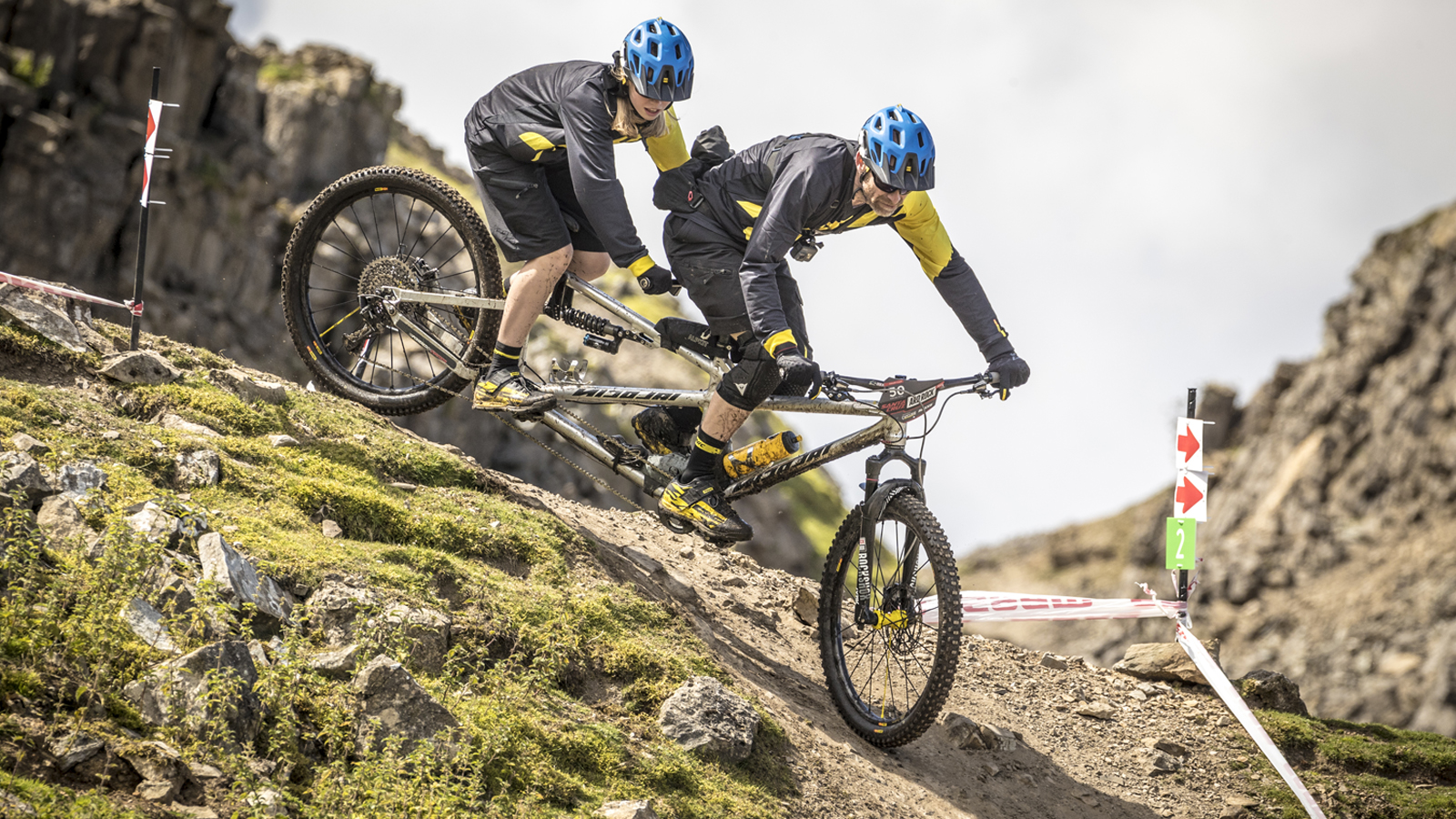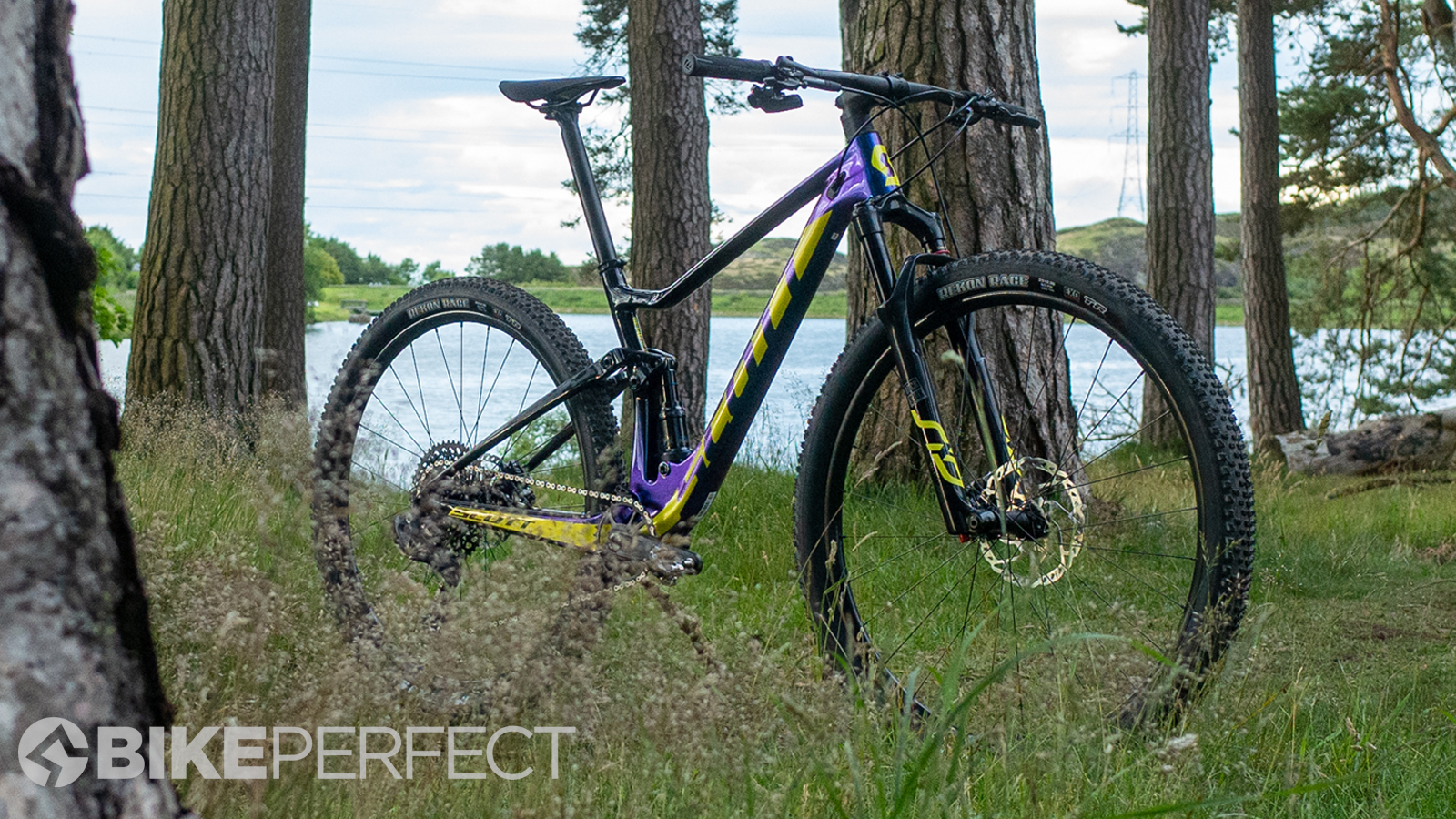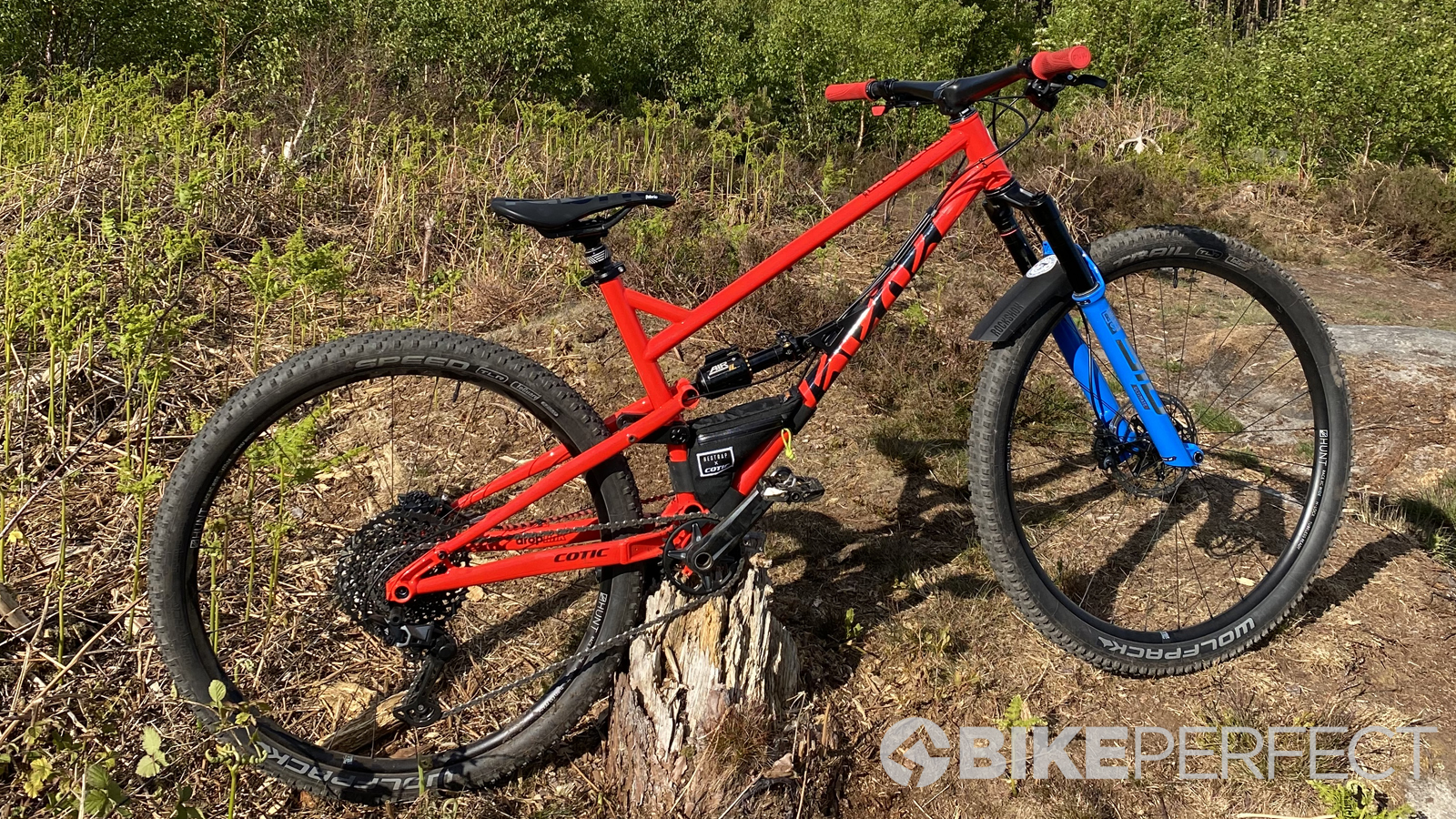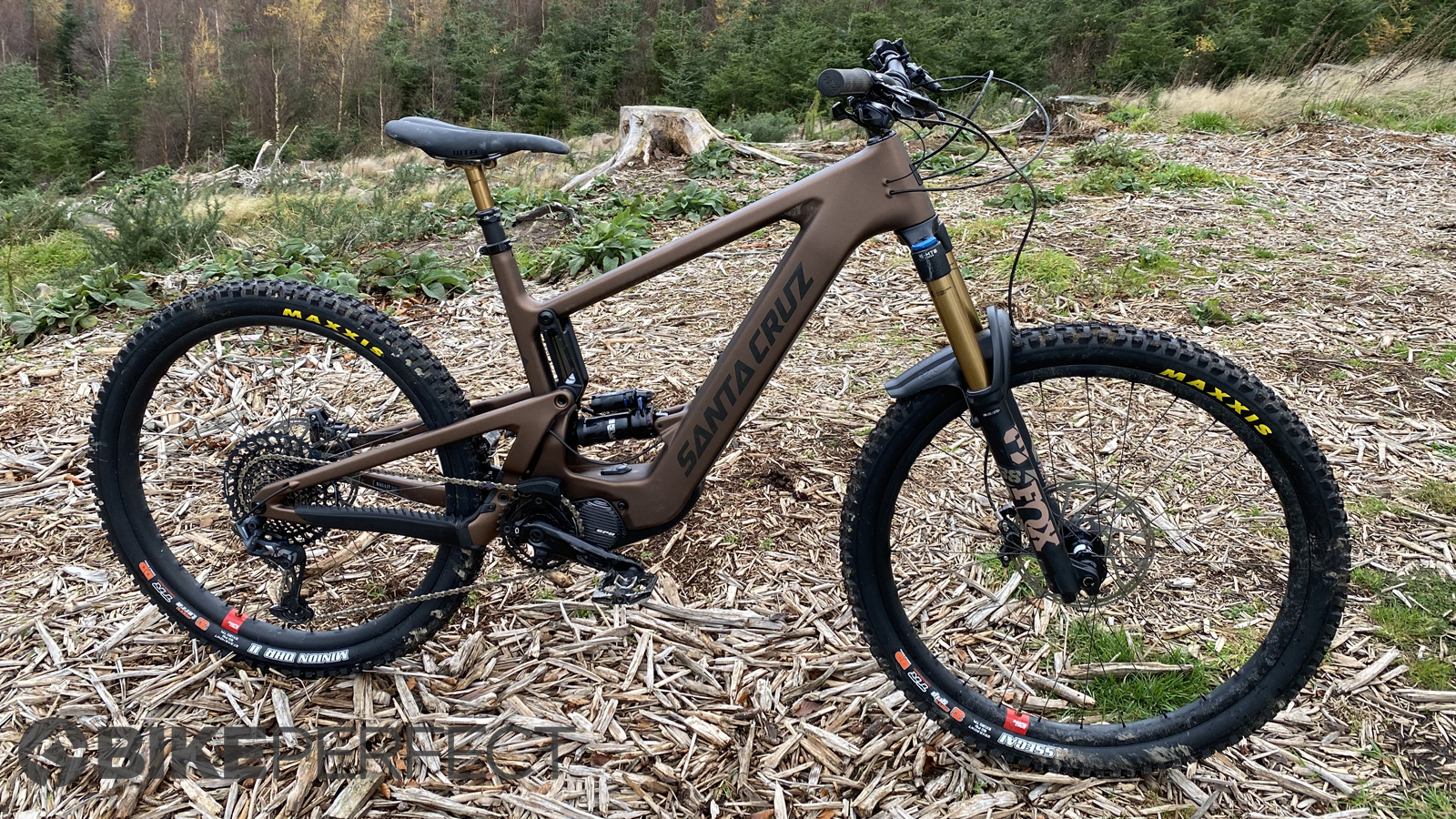Bespoken Word: Guy Kesteven's top 10 favorite bikes
Guy Kesteven talks dirt decimation and his top 10 favorite bikes from the last 30 years

The internet loves a list and let’s be honest, more people ask me a version of this question than any other. To get you through the bleak winter weather, here’s a guaranteed argument inducer: My pick of the top 10 mountain bikes from the 30-odd years I’ve been riding or mending other people’s bikes and pretending it’s a real job. I should probably point out that it’s, like me, UK-based, so if you’re after praise for the undoubtedly wonderful work of Pyga, Sunn, Lapierre, Yeti, Turner and other brands, then sorry. Also while mega-brands like Specialized, Trek and Giant have produced some of my favorite bikes - M2, Levo, Chisel, Evo, Fuel EX, Slash, STP, Anthem, Reign, etc. - the ones that tend to stick in the memory are the overachieving underdogs who are prepared to push the boundaries a bit more.
1. Pace RC100
Let’s get this out there straight away. I bloody love Adrian Carter from Pace. He’s not just one of the most skilled and startlingly fit riders I know. He can still hold a solid conversation up a fire road at a serious tempo rate or shimmy and float away from me on his local trails, despite being ‘well into his 60s’. Decades after moving from a life of quarry truck designing and Enduro moto racing, he’s still a very deliberate, detailed and exacting engineer too. He turns out bikes like the awesome full carbon RC295 with precision-targeted, unshakeable geometry, which I nearly put as my current benchmark bike. Pace also does a brace of beautiful steel frames and a long-range, long-travel bike that's powering through final prototyping at the moment. He’s also been a massive driving force behind MTB trail and facilities development across his native Yorkshire since the late 1980s, and the whole Carter family - Cathy, Sophie and Aimee - have always been a big part of the business as well.
The most iconic bike from Pace will always be the RC100 though. Their radical 1989 debut was built around unique externally machined square section ‘frame tubes, with a through-axle Bullseye chainset and integrated hydraulic brakes. It also had a bolted crown, integrated stem fork that preceded Aheadset by a couple of years in the same way that it’s long top tube and short-reach were well ahead of its time. Pace was also one of the first manufacturers to build carbon legged, triple crown suspension forks, disc brakes and full suspension into the DPD bike a couple of years later.
So whether you’ve been playing in the dirt for decades or you’re new to the game, Pace is the alloy and integration pioneering UK icons worthy of ranking alongside US pioneers like Gary Klein and Cannondale.

2. Marin East Peak
I rode a GT LTS when they first came out. My mate Russ had the remarkably sorted Ventana Marble Peak and even an Outland VPP, and I was racing a rigid steel single speed (not just for fashion but because my Gripshift X-Ray kept breaking, and I couldn’t afford a suspension fork) when the Santa Cruz Tazmon, Pro Flex 957 and GT LTS were kings of the paddock. Like many riders though, it was the shockingly simple yet beautifully efficient lines of Marin’s FRS range - the flagship Mount Vision and the price vs. performance sweet spot East Peak - that got me into full-suspension full time.
There wasn’t anything revolutionary about the single pivot design - it was basically the same as the original Mantis Pro Floater - but it was light, clean and rode with intuitive ease and pep that made it responsive and enjoyable uphill as well as down. While the high BB and spindly tubes would startle riders today, that meant it became a smash hit with ‘traditional’ mountain bikers until it became a joke that you couldn’t put one down at an event as you wouldn’t be able to find it again amongst all the others. The long-travel B-17 version got tons of riders into DH and Freeride before they snapped them, Paul Lazenby proved you could win a National XC championship on a full suss bike, and ex Formula One designers John Whyte and Adrian Ward went on to build the Radical Whyte PRST-1 linkage fork freak as well as a string of other benchmark bikes for Whyte and Marin.
3. On-One Inbred 29er
It was inevitable that I was going to ramble on even more than normal so apologies for already going on way too long. I’ll try and keep it tight from here, especially as that suits the next bike on the list particularly well.
Planet-X and their sub-brand On-One can be blamed/credited for pioneering many things - rudely honest internet guerilla marketing, one of the first day rideable but jump-proofed hardcore MTBs (Jack Flash), and the Inbred steel single speed. It was when designer Brant Richards moved that platform onto 29er wheels that it really became a game-changer though. With no gears or suspension to cloud the picture, the easier rolling smoothness and speed of the bigger wheels was impossible to ignore. Especially if you were watching the skinny white tubes disappear into the distance across the Dales under someone like MTB legend and media mentor Steve Worland. Big wheels had been around on experimental bikes since the 80s and 90s thanks to Apps, Willits and others, and Gary Fisher had stubbornly created a commercial and racing success out of them in the early 2000s. Yet it was in their simplest form on bikes like On-One’s Inbred and Gary Fisher’s Rig that wagon wheels showed the way to the promised land.
4. Whyte T-129
Getting big wheels into a suspension frame that didn’t handle like utter crap was a real challenge. Especially as there was still massive resistance to what was seen as slow, unresponsive handling that would now be called progressive or wonderfully stable. I can still remember the exact moment that I realized Whyte had properly nailed it with their T-129. I was swinging up off the last climbing section of a rocky roller-coaster singletrack trail onto a fire road at Coed-y-Brenin and feeling the front wheel fall perfectly into position. Not too far, not too little. Just the right amount of drop and then straighten to carry speed easily and naturally. It then clicked that it had done exactly the same on every part of the trail up to that point while carrying enough speed to gap a group of lighter, longer travel and much pricier machines in all shapes and sizes. Despite being an advocate of 29ers since I first raced prototypes at the Red Bull 24-hour with Gary Fisher in 2000, this was the bike I knew made 29ers make sense for a huge range of trail riders. Despite compromised tire clearance, it became a benchmark for years to come. It was also the seed of the superb Whyte S-150, S-120, and even the current E-150 Bosch powered trail bike I gave 5 out of 5 when reviewing recently.
5. Mondraker Foxy XR
Mondraker’s original Forward Geometry Foxy was another Eureka moment bike that proved handling and suspension always trump kit when it comes to the ride quality of a bike. Again I can pinpoint the moment. There’s a corner in Finale Ligure where you come off the last bit of dirty, rocky, wet trail and slam into a curving section of wall on a cobbled ramp onto the road. At least that’s what it felt like on almost every other bike on that year's bike of the year test shoot. But not the Foxy. Despite almost slick Maxxis Ardent tires front and rear, it would spit off the trail at heart-in-mouth speed, then either deliberately drift or just skim past the foot of the wall and charge off down the ramp with all the insolence of a cat licking it’s butt an inch from a chained dog. This was a result of the radical ultra-short stem and long reach top tube that only they were pushing in the mainstream back then, plus perfect poise from the Zero suspension. It also climbed impeccably and aced every other corner or techy section on test too, so despite having no dropper, SRAM X5 and a double chainset, we almost grudgingly had to give it the overall win for being the best riding bike by far. It was a trigger point for a radical overhaul of mountain bike handling that everyone has bandwagoned since.

6. Scott Spark
'Downcountry’ might be the hot ticket right now, but Scott’s Spark has been almost singlehandedly representing the speed advantages of more radical handling for roughly a decade (maybe even more, but you’ll have to Google it yourself as I’ve only got 40 minutes before deadline). The thing is, nobody much noticed as it’s also been one of the lightest full suss frames available, and the last generation has been saddled with remote control suspension that’s frankly been rubbish when things have got rowdy. If you ever looked at the numbers, you’d realize that in terms of geometry it was nearly identical to the Santa Cruz 5010, the big travel scalping, short travel trail rager that the aggro boys raved about. And while the handlebars are still buried under a tangle of remote control cables, the suspension of the latest generation is superbly sorted. It’s got tons of tire room and while it’s definitely overdue an update, the geometry is still a benchmark balance of responsiveness and control for going as fast as possible up, down or along, whether you’re racing or just ripping your mates to bits.
7. Sonder Transmitter
Sonder’s Transmitter is another obscure underdog that a lot of UK riders might not even know about but which totally changed what you could expect in terms of trail fun for under £1000. Another bike built with the help of maverick designer Brant Richards alongside Sonder main man Neil Sutton, the Transmitter proved you didn’t have to just accept what the factories offered if you were on a budget. Instead, they asked for a really well-shaped, slack-headed bike, with a very cleverly scooped and spliced tube set that gave it a totally dialed ride. Add early adoption of plus tires to steamroller through trail debris, and doubts meant the Transmitter loved nothing more than passing and embarrassing bikes with forks that cost more than it did in its entirety. That also makes it part of a select group of UK bargain bikes - Voodoo Bizango, Calibre Sentry, Vitus Sentier - whose test appearances often sparked long and angry email correspondences with major brand managers who refused to believe just how outdated and expensive their bikes had been made to look. The great news is that Sonder is still doing it now with an ever-expanding range of MTB and Adventure bikes under the wing of parent outdoor company Alpkit, and the latest Transmitter is very much a part of that, even if plus tires are now largely extinct.

8. Cotic FlareMax
So what the hell is a semi steeled frame suspension bike doing here in 2021? Especially as I generally have a deep suspicion of ‘have a go hipster heroes’ making bikes in their shed after doing a weekend frame-building course. The difference here is that Cy has been building steel bikes for decades, leveraging his experience of making steel railway wagons to create a range of bikes from the material that’s actually been developed and evolved for far longer than alloy or carbon fiber. Cy has also been playing and pushing the limits with geometry and practical features like tire clearance since his original Soul hardtail.
Anyway, enough history. While most riders should probably get the ‘best of’ travel, geometry and steel character compilation that Cy’s latest Jeht delivers, it’s the FlareMax I’ve been riding as a uniquely joyful and expectation challenging personal bike since the first lockdown. While you can build it up chunky with a 140mm fork and really reap the benefits of radical Longshot geometry and sorted DropLink suspension, I’ve built mine with a SID and super light wheels. The result is a climb-hungry, singletrack charging, 13kg rocket ship that lets me dance giddily right at the edge of our mutual limits on my favorite local trails. But most of all it’s something totally competitive but also very different, and that’s the essence of mountain biking for a lot of us.

9. Canyon Spectral 29
At the complete other end of the characterful, kooky looks spectrum is Canyon’s new Spectral 29. A bike so balanced and brilliantly sorted I actually finished my first ride on it thinking it was pretty ‘meh’. Only when I started looking at the times it had laid down on runs I’ve ridden hundreds of times or the fact I was riding well beyond my normal limits without a worry, did the brilliance of this bike start to sink in. At that point, it was best moto foot forward and rip every trail a new one as often as possible. While the CF8 build I tested is weighed down with a heavy-duty high control kit that stifles the carbon frame slightly on climbs, the CF9 uses that same chassis with a shorter travel fork, inline shock and carbon DT wheels to drop a kilo off its weight with very little backing off on bike sanctioned bravery. And while the direct sell/bike shop conflict will always be a divisive argument, you can’t deny that Canyon has helped reset the benchmarks for value while still delivering top quality, cutting-edge bikes with delicious attention to detail and styling. Their cardboard boxes are genuinely brilliant too.

10. Santa Cruz Bullit
Actually, that’s a really interesting point, maybe even a weekly column in itself as you certainly deserve an easier, shorter one than the epic this has turned into. But Cotic, Canyon and Santa Cruz all ship their bikes in particularly well thought out, custom bike boxes. In fact, last time I was at their HQ Joe Graney was telling me he’d just perfected the Mk13 bike box design. Oh, and by the way, Joe isn’t just the dude who designs the bike boxes and the custom carts they have for collecting frames, components and putting them all together. He also runs the entire company since founder Rob Roskopp sold up. That tells you a lot, really, and hopefully turns cyclical presumptions about Santa Cruz being an overpriced hype brand on their head. As should the fact that they stuck to screw in BBs for easier servicing and longer life when nearly everyone else went press fit. They’ve also had lifetime bearing replacement for years and completely changed the carbon frame and rim market for end-users with their no questions asked warranty support.
While not every Santa Cruz has been great - the second-gen Bullit nearly killed me in the Alps training for the Mega Avalanche, and the Bronson before last was a mess - there’s been a brilliant Santa in my life since 2000 with the original Blur and then rude boi Blur 4X. The original Tallboy and Tallboy LT are all-time favorites, and the current crop of lower shock kinematic bikes are brilliant.
If you’re going to pay a lot for a lifetime warrantied bike that handles better and better and makes you laugh louder the harder and crazier you ride though, surely getting the one that lets you do that the most is the one to get. The Bullit isn’t just a phenomenally composed, chaos swallowing monster truck with Shimano EP8 power to go again and again and again either. It’s eerily stiff and stable for sticking the 29er front wheel into the most suicidal situations without concern, but with enough life, feedback and a fun-sized 27.5 back wheel to just get sideways and ride like an absolute goof if you want.

The wildcard: Nicolai tandem
Ok, so this is majorly niche here, and it’s also number eleven in a top 10, but it’s my list so my rules. Besides, while very few people will ever want to ride an MTB tandem, German MTB legends Nicolai definitely deserve a shout. Not least for their outrageously in your face scaffolding aesthetics with vast but perfect fish scale welds, plate gussets and surgically sharp CNC machined segments. Ever since founder Kalle Nicolai was involved in the development of early full-suspension MTBs in California in the 90s, he’s been at the cutting edge of technology including gearboxes, shock setups and literally taking handling to whole new lengths with the Geometron bikes developed with Chris Porter.
Having loved the utterly bombproof Helius AM bike I had as a long-termer, getting a Nicolai tandem so I could take my young daughter riding (and also test all the 27.5in wheels that suddenly appeared a few years back) was always a dream. It served as a perfect carrot to dangle over the many middle of the night sessions writing and editing a ‘1001 bikes to ride before you die' book project too.
Having learned lessons with a previous custom tandem in the mid-90s - the main one being that steep head angles and short wheelbases make a very bad downhill combination but a spectacularly effective siege engine for hurling stokers a terrifying distance over the bars - I went long, low and super slack with custom geometry and the resulting ‘Tankdem’ is my absolute favorite bike ever. It’s been raced and ridden everywhere with my friends, my daughter, industry icons (turns out Michel from Mavic screams and swears impeccably in English), and even a Paralympic gold medallist and World Champion. In fact, it’s generally become a legend in its own very long wheelbase as the infamous Grim Sweeper of the Ard Rock Enduro. And yes, you can get it around those hairpins on Stage 2...
So, there you go. A flat-out, from the hip run-through of the most memorable ten from probably a couple of thousand bikes I’ve ridden (no really, I did the maths once and it was stupid) over the past 30 odd years. Make of it what you will and I’ll be back next week with more words. Though probably for the benefit of everyone, not quite so many.

Guy Kesteven has been working on Bike Perfect since its launch in 2019. He started writing and testing for bike mags in 1996. Since then he’s written several million words about several thousand test bikes and a ridiculous amount of riding gear. He’s also penned a handful of bike-related books and he reviews MTBs over on YouTube.
Current rides: Cervelo ZFS-5, Specialized Chisel, custom Nicolai enduro tandem, Landescape/Swallow custom gravel tandem
Height: 180cm
Weight: 69kg
